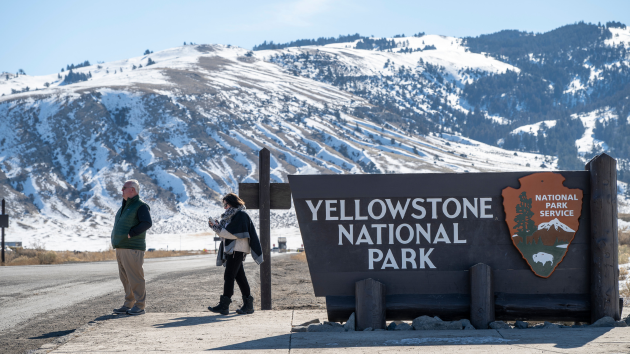
(WYOMING) — More geological changes are occurring at Yellowstone National Park, as another hole forms in one of the park’s basins.
The hole is a blue water spring, discovered by geologists in April as they conducted routine maintenance of temperature logging stations at Norris Geyser Basin, according to the U.S. Geological Survey.
The pool, located in the Porcelain Basin sub-basin west of a patch of vegetation known as “Tree Island,” was not there during their last visit to the area in the fall, according to the USGS.
The water is light blue in color and is about 1 foot deep below the rim. It’s geological features indicate it formed as a result of a hydrothermal explosion — an event caused by pressure changes that result from the transition of liquid water to steam, according to the USGS.
The pool measures about 13 feet in diameter and is surrounded by numerous small rocks about 1 foot across. The rocks are covered by light gray, sandy mud.
It is “not surprising” that a hydrothermal explosion occurred at the site, as it has happened several times in recent decades, according to the USGS. The North Geyser Basin is the “most dynamic” area in Yellowstone, the agency said.
High-resolution satellite imagery indicates that the hole was not present on Dec. 19, but images taken on Jan. 6 show a depression that had formed in the area. By Feb. 13, the pool had been filled with water, the satellite images show.
More will hydrothermal explosions will likely be recorded, as a monitoring station installed in 2023 can detect geophysical data indicating an explosion.
In April 2024, a “small” explosion at the Porcelain Terrace left a crater measuring several feet across in diameter, according to the USGS.
A hole that formed in Yellowstone’s Biscuit Basin, near Old Faithful, in July 2024 was also attributed to a hydrothermal explosion, according to the National Park Service.
While that hole likely formed in a single major explosive event, the newest thermal feature appears to have formed by multiple small events that initially threw rocks but later threw silica mud a short distance, creating a small pit that became filled with silica-rich water.
Geologists estimate that the feature probably started to develop on Dec. 25, with further activity occurring through late January and early February, according to the USGS.
Beneath Yellowstone National Park lies a complex and extensive volcanic system. The park is thoroughly monitored by the USGS and the Yellowstone Volcano Observatory.
Copyright © 2025, ABC Audio. All rights reserved.




